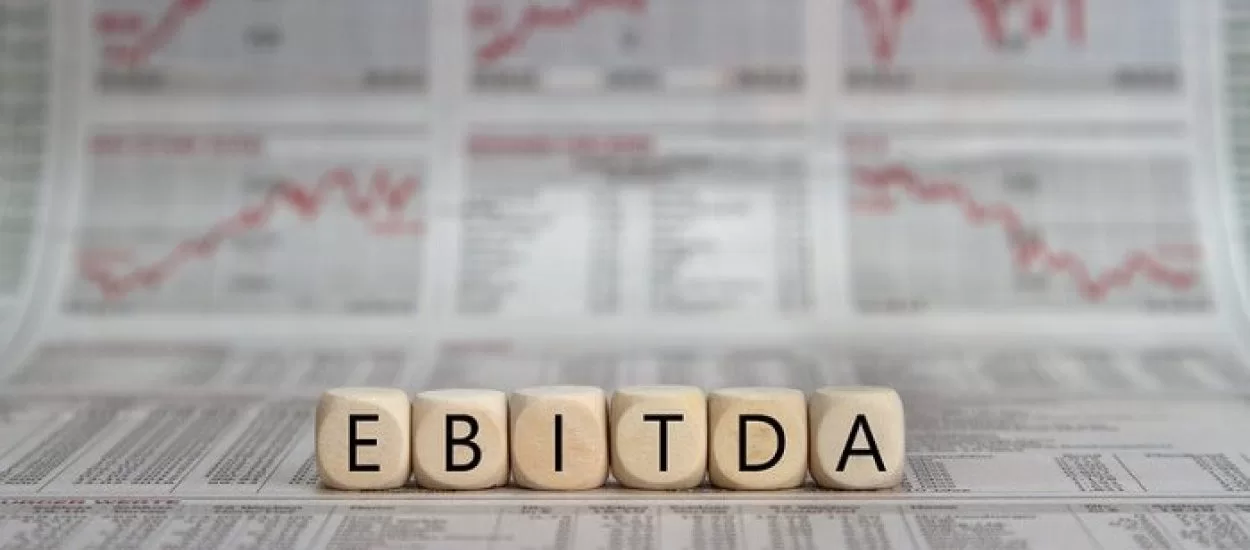EBITDA is one of the important multipliers that indicate the financial position of a company. This indicator must be taken into account by each investor who intends to select the optimal investment object. Today we will tell you how to calculate and determine the potential of securities. A novice investor will understand which enterprises should be chosen for investing capital.
What is the meaning of EBITDA?
In fact, this is the profit of the enterprise before deducting debt, taxes and depreciation costs. The indicator is often present in corporate financial reports, it allows you to make a full-fledged fundamental analysis. It is often referred to as “dirty profit”, which is missing from the list of standards and financial statements. This value is calculated in order to visually show the current state of capital.
For the first time, the calculation of EBITDA began to be made in the 80s of the last century. This indicator was used to analyze the financial statements of the company in relation to its debt obligations. The obtained value was compared with net profit, determining the level of creditworthiness of the enterprise. The investor can clearly determine how much debt the company can provide.
The value of the indicator is that the investor evaluates the cash flow of a particular company, comparing the obtained value with other representatives of the industry. EBITDA allows you to select the best companies by investing in the most promising securities. On the territory of one country, completely different corporations can operate. Firms will differ in terms of cash flows, associated risks and growth prospects. An investment decision should be made only after the investor has analyzed all the existing factors.
Pros and cons of EBITDA in simple terms
Most fundamental indicators have advantages and disadvantages that should be taken into account when drawing up a trading strategy. The table provides a list of strengths and weaknesses. Understanding what EBITDA is and how to work with it, an investor can choose the optimal set of securities for his portfolio. It is virtually impossible to take into account all existing indicators, so the stock player has to focus on key parameters.
| Advantages | Flaws |
| Depreciation is included in the calculation. A participant in the international market observes an increase or decrease in the money supply, from which debt obligations will be deducted. | The final value does not say anything about the risks of non-repayment of receivables. This indicator does not allow assessing the cash turnover of enterprises operating with delayed payments. |
| The investor receives a simple and understandable formula that can be used even at the start of his career. | The formula does not take into account changes in the corporation’s cash resources. |
| The parameter is often used for comparative analysis of companies from the same industry. It is very informative, because it allows you to evaluate different sources of funding. | This parameter cannot be used to correctly display the probability of payment of debt obligations. It does not take into account the company’s need for capital expenditures. |
| Having received the final value, the investor cannot determine the sources of income, their reliability and other features. | |
| There is a direct relationship between the indicator and the nature of the accounting policy. |
EBITDA calculation: formula and its application
The indicator is calculated on the basis of financial statements of public companies. It provides a clear picture of what the potential return on investment might be. The abbreviation means “earnings before interest, taxes and depreciation”. To calculate EBITDA, you need to do the following:
- Depreciation and amortization are added to profit before tax.
- To the value obtained, you must add the interest paid.
- Interest earned is deducted from the amount.
As a result, the exchange player receives a clear EBITDA value. What does this indicator mean, every professional investor should know. The investor should understand that the company’s management makes an independent decision on what expenses and incomes to include in the final calculation. When the approach changes, the final value can change significantly. It should be borne in mind that ignoring the difference in exchange rates for foreign exchange transactions will have a significant impact on the results of calculations.
There are several easy ways to manipulate EBITDA in financial statements. The company can sell products to conditionally controlled enterprises. The calculation does not take into account cash flows, and therefore it is not necessary to receive income. Debt obligations are sometimes repaid by dishonest methods, withdrawing monetary assets from circulation. Operational activities remain transparent, but such manipulations are very difficult to trace.
Example of calculating EBITDA for dummies
In order to get acquainted with the topic under consideration in detail, we propose to study the indicator using the example of the real Russian company Uralkali. At the moment, there are financial reports for 2016, which allows you to analyze the financial activities of the enterprise and make forecasts for further development. Among the presented indicators, it is necessary to highlight the statement of cash flows of the enterprise. The trader needs to extract the raw data and calculate using the EBITDA formula. Deciphering the received value is also an important part of the analysis and the task of the stock player.
Profit before tax is 117.048 billion rubles. Depreciation – 13.015 billion rubles, interest paid – 21,374 billion rubles, interest received – 905 million rubles. Substituting the obtained data into a well-known formula, we get a result of 150.532 billion rubles. In our situation, we can observe positive dynamics in terms of fundamental EBITDA. A negative value would indicate a loss-making enterprise.










